In the blog about the 6888th Central Postal Delivery Battalion, it was noted that the Women’s Army Auxiliary Corps was not intended to serve overseas. It’s not that the women couldn’t serve overseas, but the women serving in the WAAC were not given the same securities as soldiers. They weren’t protected by the Geneva Convention, didn’t have military life insurance, or veterans’ health benefits.
A few days into the North Africa campaign, Gen. Eisenhower asked for five WAAC officers, some who spoke French, to work as executive secretaries. They were followed shortly by a post headquarters company and a signal company, and it became obvious that WAAC personnel were needed overseas, and changes needed to be made. In July 1943, the Women’s Army Auxiliary Corps became the Women’s Army Corps, with the same protections as male soldiers. Director Oveta Culp Hobby became Col. Hobby. Gen. George Marshall is shown the in the swearing-in photo below.

Oveta Culp Hobby enlisting in the Army, with the rank of colonel, to lead the Women’s Army Corps.
Gen. Marshall supported the WAC; he wrote in a Feb. 15, 1944 letter that “I am probably the strongest Army advocate of the WAC organization and I am fully convinced that a great deal of the work of the Army can be done better by women than by men.”
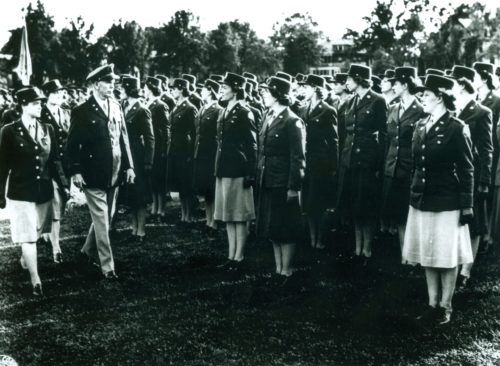
Gen. George Marshall reviewing WAC troops at Ft. Oglethorpe, GA. Enlisted WAC personnel wore dark skirts; the officers wore light-colored skirts.
This is the story of three women from Virginia who served in the WAC. They are representative of the women who served – they are urban and rural; they are high-school educated and college-educated; they come from well-off and poorer families. But all three had a desire to serve their country and joined 150,000 other women who served both stateside and overseas.
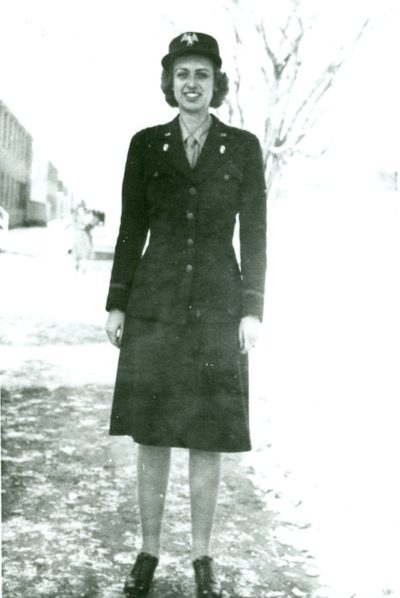
First Lt. Lelia Cocke, from Roanoke, graduated from Hollins University in 1937. She trained at Fort Des Moines, Iowa (shown above), and served as the Personnel Officer at the Allied Translator and Interpreter Section at Indoorpilly, Brisbane, Australia. Cocke arrived in Australia in May 1944 in a group of 640 WAC personnel.

Entrance to Yeronga Park, Brisbane, Australia
According to Queensland WWII Historic Places, the women assigned to Yeronga Park found the “barracks were somewhat more primitive than those in the United States, with bucket latrines, outside showers, and limited laundry facilities” but that theirs were better than the men’s barracks at the camp.

Cocke (center) also served in Manila, Philippines, where this photo was taken in late 1945. After the war, she returned to Roanoke, married William Bagbey, had a family, and volunteered in the community.
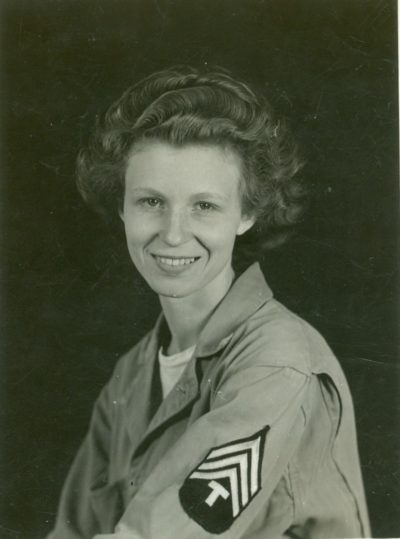
Sgt. Viola Burleson was a high-school graduate from Buchanan who worked in an office as a typist. When she enlisted in the WAC, she was trained as an Army photographer and served at March Field, CA, with the Army Air Corps.

Sgt. Viola Burleson in the photo lab at March Field.
Some of her photos show women in the WAC working at March Field:

WAC officers at March Field, CA.

Tightening lug nuts in the motor pool at March Field. Note the WAC oxfords.

WAC enlisted woman doing paperwork at March Field.
After the war, Burleson married Joel McCraw and lived with her family in New Hampshire.

Capt. Rebecca Brockenbrough, from Richmond, graduated from the University of Richmond and got her master degree from Columbia University. Before the war, she taught at St. Margaret’s, an Episcopal girls school in Tappahannock, VA.
She trained at Fort Des Moines, IA, and Conway, AR, before being sent to Salisbury, Wiltshire, in Southern England, in April 1944.

Arrival parade of the WAC personnel at Salisbury, England
Later that year, her unit served in Paris, and were there for the Remembrance Day ceremonies.
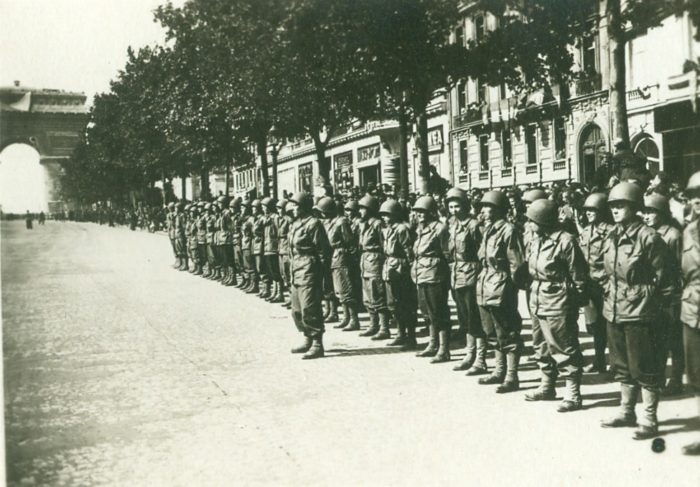
WAC personnel at the Arc de Triomphe in Paris during Remembrance Day ceremonies Nov. 11, 1944. While serving in Europe, WAC soldiers wore fatigues, boots, and helmets.
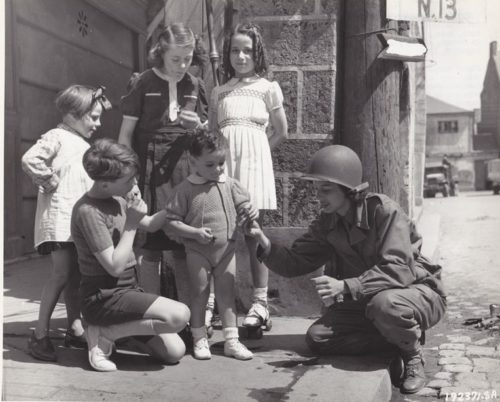
One of the early WAC personnel in France, wearing the same type uniform issued to male soldiers.
Brockenbrough was interviewed regarding her overseas experience while in the WAC for the article “Wacky Times: An Analysis of the WAC in World War II and its Effects on Women” in Social Science Review in 2000. When asked what life was like in the Army, she replied “‘we are all doing operational jobs and releasing the men for combat – what most of us came in the army for’ but admits that ‘we five [WAC soldiers] and three or four Red Cross girls will live together – the only women in this man’s camp. I surely was glad to see those Red Cross girls and I don’t mean maybe!’”
After the war, she returned to Virginia and served as the headmaster at St. Margaret’s and a professor at Longwood University in Farmville.
The photos from these three women of their service in the WAC are among thousands of personal and military photos held in the George C. Marshall Foundation Archives. Each one of them has a story to tell. I’m glad to share the stories of Lelia, Viola, and Rebecca.
Photos and letter from the George C. Marshall Foundation. Sources also consulted include:
Queensland WWII Historic Places
“Wacky Times: An Analysis of the WAC in World War II and its Effects on Women” by Jennifer Nichol Stewart, in
International Social Science Review, Vol. 75, No. 1/2 (2000).
Melissa has been at GCMF since last fall, and previously was an academic librarian specializing in history. She and her husband, John, have three grown children, and live in Rockbridge County with three large rescue dogs. Keep up with her @life_melissas.
